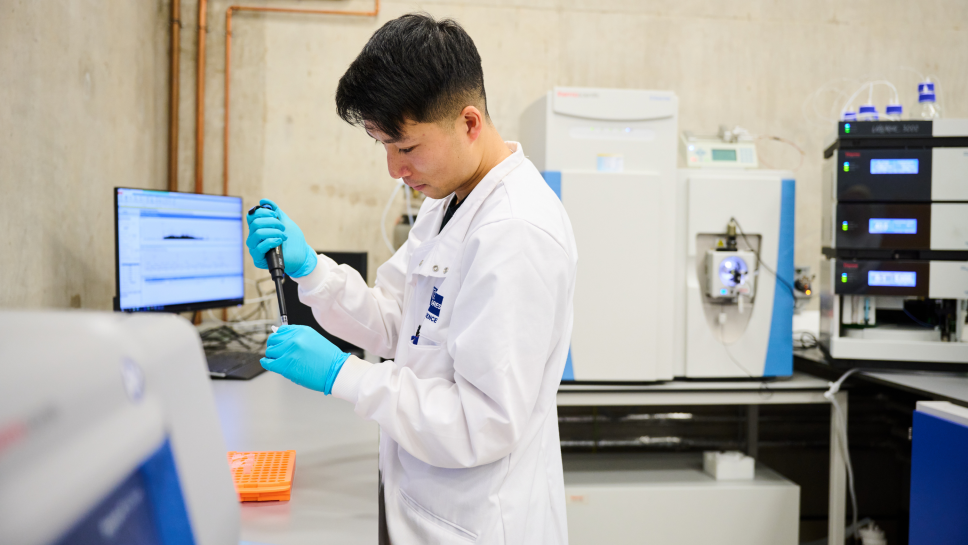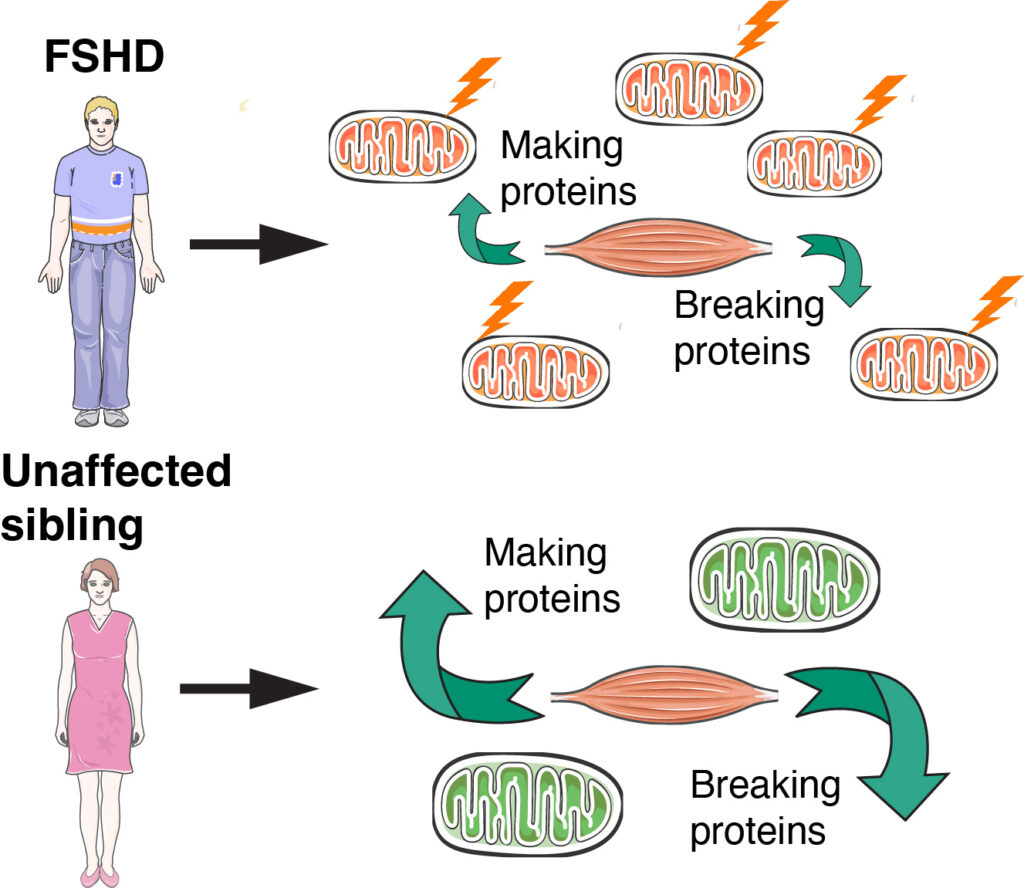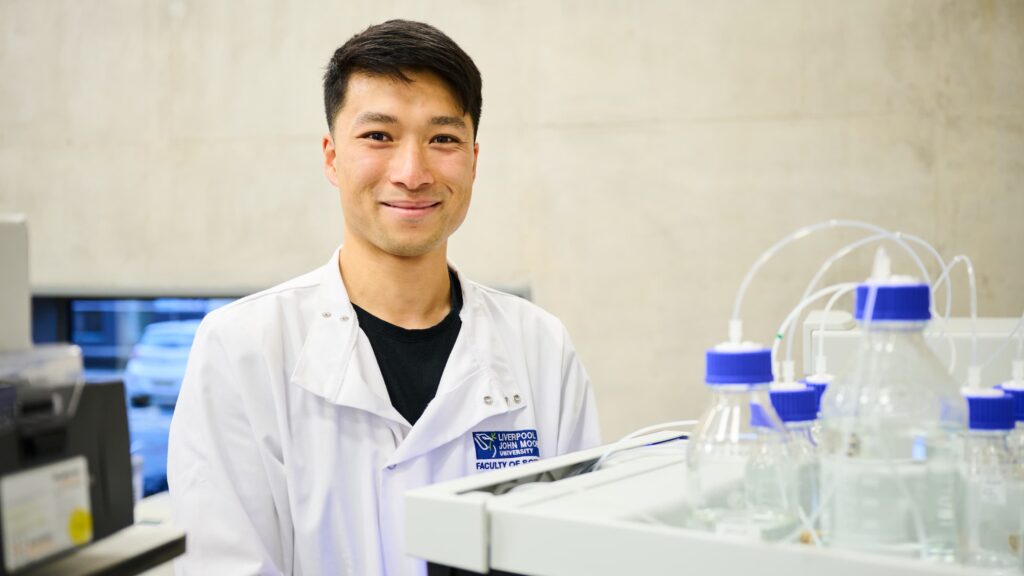New research carried out by MDUK-funded researchers has led to the discovery of a potential cause of facioscapulohumeral muscular dystrophy (FSHD). This research was led by Dr Yusuke Nishimura (pictured) in Professor Jatin Burniston’s lab at Liverpool John Moores University, working with Dr Yi-Wen Chen’s lab at the George Washington University in the US.
Research discovers new insights into the potential cause of Facioscapulohumeral Muscular Dystrophy

The research groups have been investigating the causes of muscle wasting in FSHD. Their findings could eventually help in the development of new treatments for the condition. This piece is based on the full research article, which is freely available here link.
What is Facioscapulohumeral Muscular Dystrophy?
FSHD is the third most common muscular dystrophy. It affects more than half a million people worldwide. There is currently no effective treatment or cure for Facioscapulohumeral Muscular Dystrophy (FSHD). The condition is characterised by the wasting of the face, shoulder and upper arm muscles, as a result of inherited genetic changes that cause the unnecessary production of a gene called DUX4.
Why was this research conducted?
The research aimed to discover new information from the muscles of people living with FSHD using cutting-edge methods that can study thousands of proteins. This type of wide-scale profiling represents the gold-standard approach for discovering new information, highlighting new avenues for future research, and developing new or improved treatment strategies.
What is happening in the muscles of people with FSHD?
Proteins play key roles in nearly all aspects of biology. Proteins perform many essential roles. They can become old and/or damaged, so it is important they go through a turnover process. Protein turnover involves making new proteins and breaking down old and/or damaged proteins, ensuring the proper functioning of cellular processes and maintaining overall protein health.
Through their experiments, the team discovered that a group of key proteins within the mitochondria of muscle cells behaved differently in samples from individuals with FSHD compared to their unaffected siblings. Mitochondria are known to be the ‘powerhouse’ of the cells, as they produce most of the energy required for cellular function. Mitochondria also have important roles in deciding the balance between cell death and cell survival.
Initial experiments revealed an unexpected increase in the number of mitochondrial proteins in FSHD muscle cells. These mitochondrial proteins were also found to be in higher amounts in FSHD cells and showed slower rates of protein turnover as compared to the unaffected siblings, which means that there is an accumulation of old and damaged proteins in FSHD muscles (Figure 1).

The second set of experiments confirmed the initial discovery using an independent set of samples. Importantly, the researchers found that reducing DUX4 in FSHD muscle cells using an experimental molecule generally improved the activity of the mitochondrial proteins.
The molecule used to reduce DUX4 levels is called 2’-O-methoxyethyl (2’MOE) and is a type of molecular patch. It has so far only been used in cells and in some animal models. 2’MOE has not yet been tested on people with FSHD, although it is undergoing clinical trials for other conditions (including ALS and Huntington’s disease).
These findings may indicate that DUX4 plays a role in the irregular activity of mitochondrial proteins in FSHD muscle cells.
In summary, this research discovered a new aspect of FSHD pathology, which in turn may lead to new opportunities for the development of treatment strategies.
Future directions in FSHD research
A new focus on mitochondrial biology in FSHD may improve the effectiveness of new treatments and further our understanding of the effects of exercise training in FSHD. Aerobic exercise is a good for muscles, and although there haven’t been many studies on exercise in people with FSHD, those limited studies indicate exercise could be beneficial. However, given the limited number of these studies, people with muscular dystrophies should be careful while exercising, because high levels of exercise can also represent an additional stress on muscles.
Nevertheless, these findings could open new and important avenues of research in FSHD, shifting the focus on mitochondrial biology and protein quality control.

This piece was written by Dr Yusuke Nishimura. Yusuke is a Postdoctoral Research Associate in Muscle Proteomics at Liverpool John Moores University, UK. His research explores the molecular and cellular mechanisms in the regulation of skeletal muscle protein turnover and mass in health and disease. Yusuke has been a part of the Research Communications Group of volunteers at MDUK since he started working on the MDUK-funded project in June 2022. He trusts as a scientist he should deliver the latest information we uncover in the lab to different audiences and people with different conditions so that they can know where we are now with research and how is it advancing (Muscular Dystrophy UK’s Research Communications Officer, Dr Andrea Gubas interviewed Yusuke).


